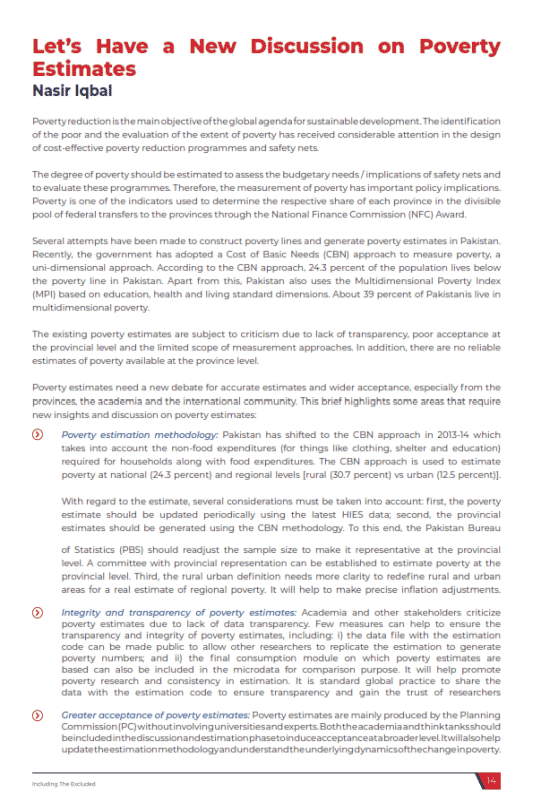Let’s Have a New Discussion on Poverty Estimates (P & R Vol.2 Issue 4)
Poverty reduction is the main objective of the global agenda for sustainable development. The identification of the poor and the evaluation of the extent of poverty has received considerable attention in the design of cost-effective poverty reduction programmes and safety nets. The degree of poverty should be estimated to assess the budgetary needs / implications of safety nets and to evaluate these programmes. Therefore, the measurement of poverty has important policy implications. Poverty is one of the indicators used to determine the respective share of each province in the divisible pool of federal transfers to the provinces through the National Finance Commission (NFC) Award. Several attempts have been made to construct poverty lines and generate poverty estimates in Pakistan. Recently, the government has adopted a Cost of Basic Needs (CBN) approach to measure poverty, a uni-dimensional approach. According to the CBN approach, 24.3 percent of the population lives below the poverty line in Pakistan. Apart from this, Pakistan also uses the Multidimensional Poverty Index (MPI) based on education, health and living standard dimensions. About 39 percent of Pakistanis live in multidimensional poverty.




